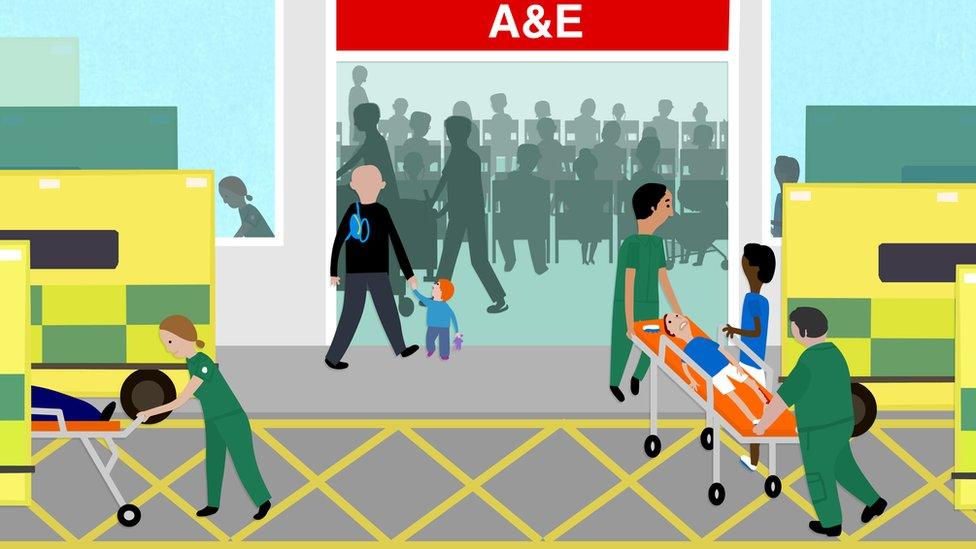'Lucky' NHS struggles through the winter
- Published

As warmer weather and the Easter holidays arrive, the NHS in England is reflecting on what looks like the busiest, some would say the worst, winter on record.
Official figures reveal the stresses and strains being felt during February after torrid times over the previous two months.
February's A&E waiting time performance was slightly better than December's and January's, with 87.6% of patients treated or assessed within four hours.
But it was still one of the worst monthly figures since records began more than a decade earlier, and it came after a fall in the number of people coming in to A&E units.
Once patients got through A&E there could still be long waits.
Adding up the number of patients between December and February, who waited more than four hours for a bed after a decision to admit, there was a total of 196,000, which was a 45% increase on the same period the previous year.
Delayed transfers of patients who were medically fit to leave continued to cause problems for hospitals.
There was a 17% increase in the number of beds not available to other patients in the year to February.
NHS England said that in effect around 1,100 beds had been taken out of normal usage compared with February 2016.
More than 36% of delays were linked to problems with social care services, the highest since the data was first collected in 2010.
Running flat out
With some hospitals reporting that at times over the winter every bed was occupied, it is clear that the service was running flat out and very close to capacity.
This in turn affected routine surgery, with bed shortages causing delays to procedures where an overnight stay was required.
Hardly surprisingly there was a big jump, of nearly 40%, in the number of patients waiting more than 18 weeks for routine treatment.
This might sound like "same old, same old" and the story of the NHS being under pressure is hardly new.
Whatever the dire warnings, hospitals muddled through.
But it is worth noting that the system came under such strain despite intense contingency planning, and demands by NHS chiefs that non-urgent procedures be cancelled for several weeks to clear the decks for emergency admissions.
What must be worrying for NHS leaders is that hospitals were full at times, and waiting times were rising, even in a mild winter and with no above-average flu or norovirus cases.
A sense of relief must be tempered by concern that the health service may not be so lucky next year.
Luck next year?
The system runs on very fine margins and it would not take much to seriously rock it.
Hospitals and local health commissioners are working hard in most areas to manage patient flows into A&E departments and to treat more people in their local communities.
There is a hope that extra investment in social care in England will facilitate the quicker discharge of patients.
But two things are clear as summer approaches.
Firstly, the traditional easing of pressure after winter does not happen any more as patient demand rises relentlessly month by month.
Secondly, it won't be long before hospital managements have to start planning for next winter, aware that they won't be lucky every time.